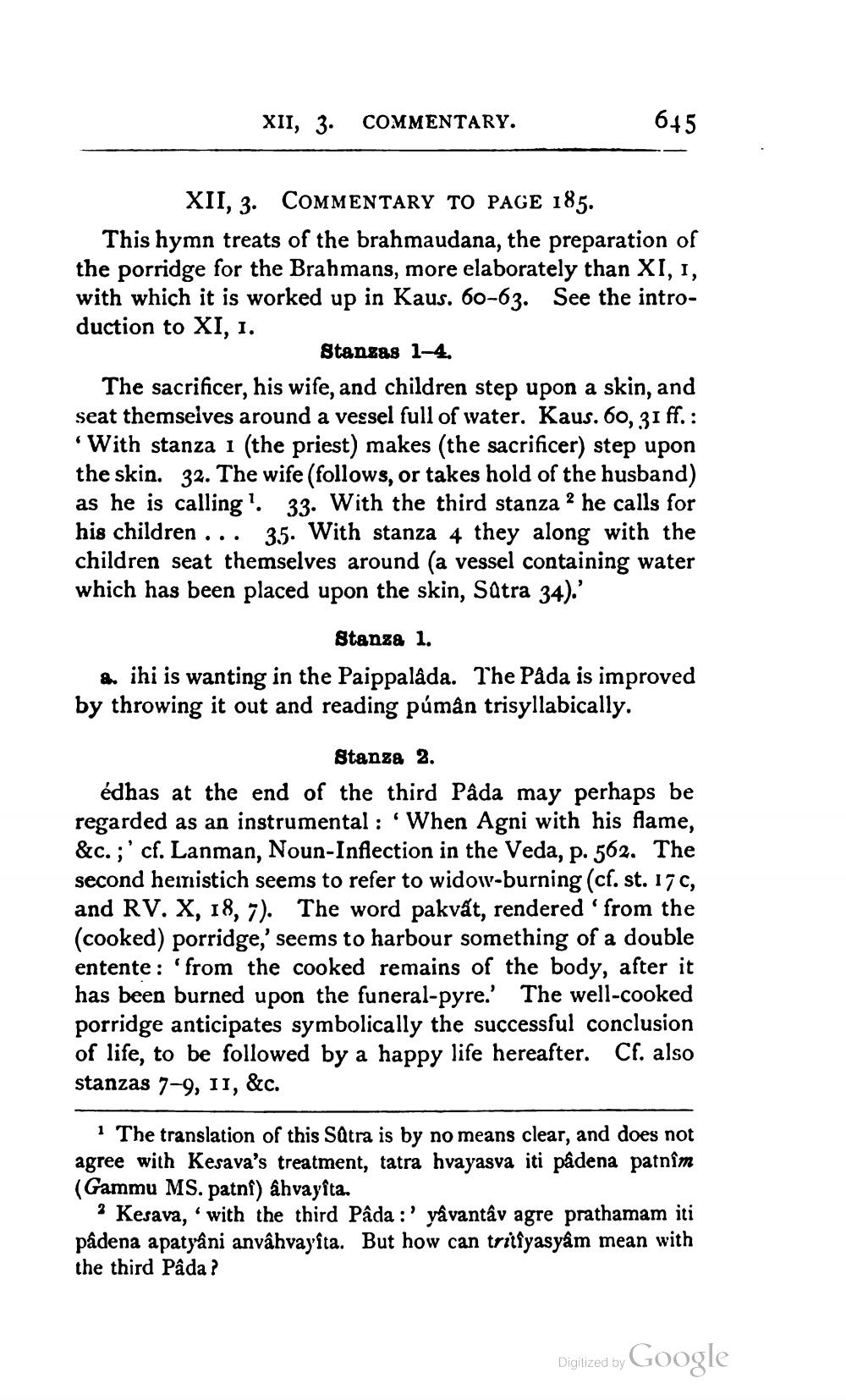________________
XII, 3. COMMENTARY.
645
XII, 3. COMMENTARY TO PAGE 185. This hymn treats of the brahmaudana, the preparation of the porridge for the Brahmans, more elaborately than XI, 1, with which it is worked up in Kaus. 60-63. See the introduction to XI, 1.
Stansas 1-4, The sacrificer, his wife, and children step upon a skin, and seat themselves around a vessel full of water. Kaus. 60,31 ff. : "With stanza 1 (the priest) makes (the sacrificer) step upon the skin. 32. The wife (follows, or takes hold of the husband) as he is calling? 33. With the third stanza ? he calls for his children ... 35. With stanza 4 they along with the children seat themselves around (a vessel containing water which has been placed upon the skin, Sätra 34).'
Stanza 1. an ihi is wanting in the Paippalada. The Påda is improved by throwing it out and reading púmân trisyllabically.
Stanza 2. édhas at the end of the third Pâda may perhaps be regarded as an instrumental : 'When Agni with his flame, &c.;' cf. Lanman, Noun-Inflection in the Veda, p. 562. The second hemistich seems to refer to widow-burning (cf. st. 17C, and RV. X, 18, 7). The word pakvát, rendered 'from the (cooked) porridge,' seems to harbour something of a double entente: 'from the cooked remains of the body, after it has been burned upon the funeral-pyre.' The well-cooked porridge anticipates symbolically the successful conclusion of life, to be followed by a happy life hereafter. Cf. also stanzas 7-9, 11, &c.
1 The translation of this Satra is by no means clear, and does not agree with Kesava's treatment, tatra hvayasva iti pádena patnim (Gammu MS. patni) ahvayîta.
? Kesava, with the third Pâda :' yâvantâv agre prathamam iti pâdena apatyâni anvâhvayîta. But how can tritiyasyâm mean with the third pada ?
Digized by Google




